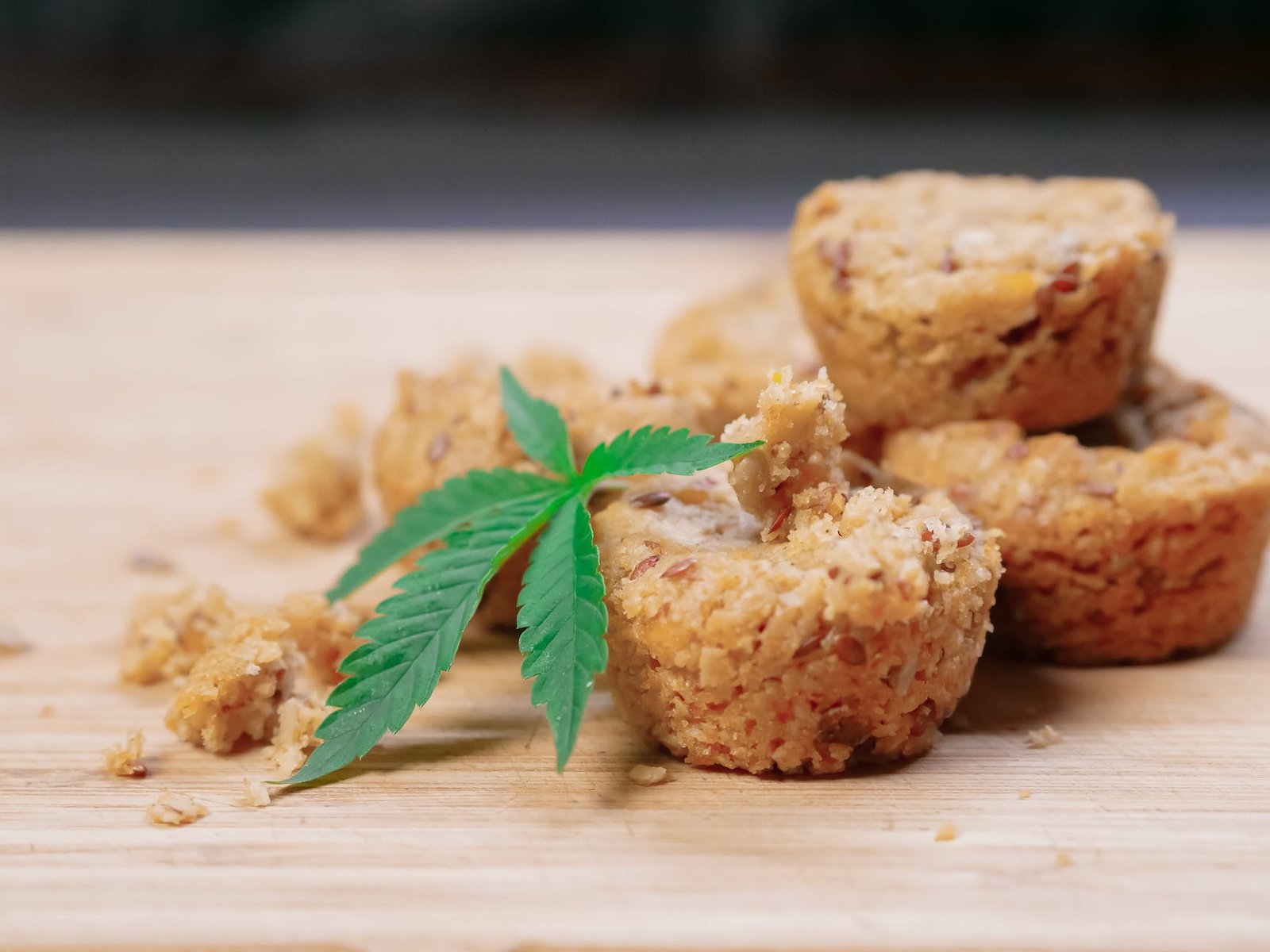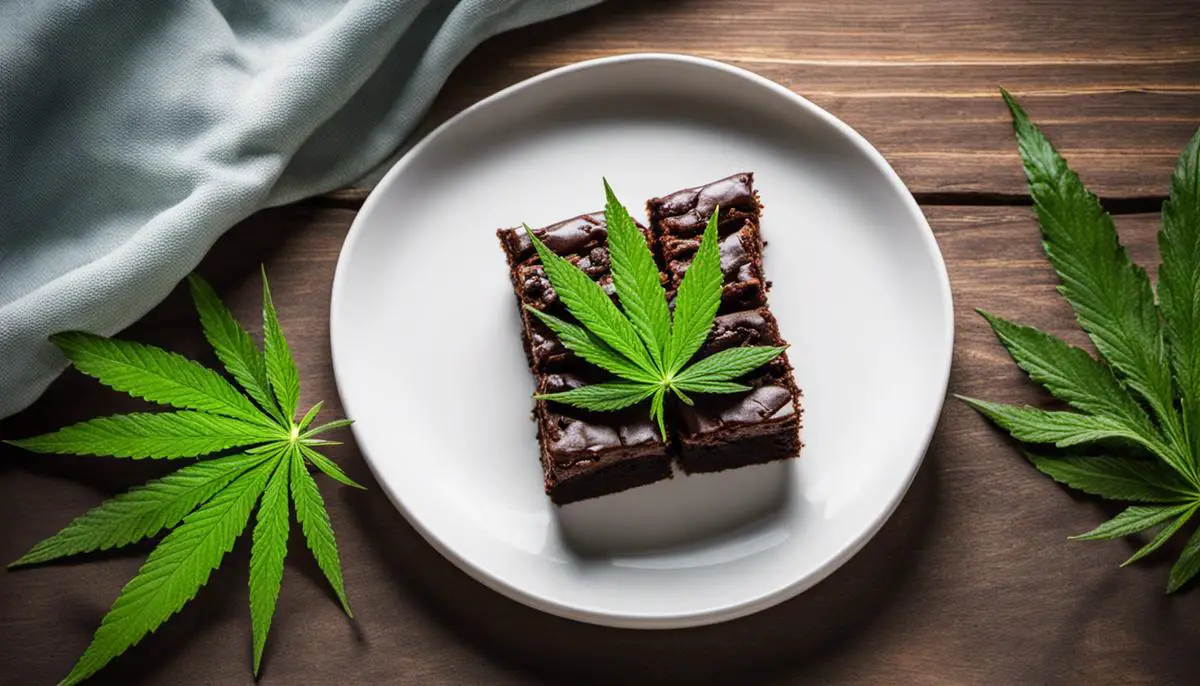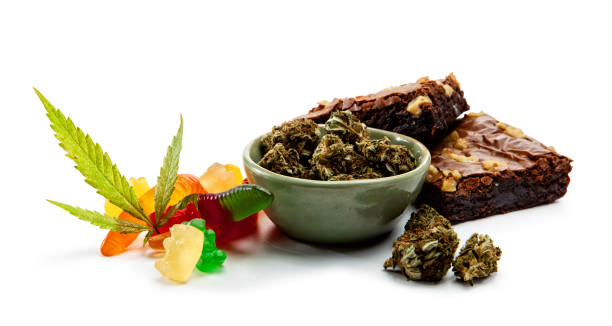Interested in the world of edible marijuana recipes? You’re not alone. Throughout the ages, mankind has sought various methods to engage the medicinal and leisurely properties of marijuana. In recent years, the focus has significantly shifted from traditional smoking to more sophisticated and controlled methods like edibles.
While fun and rewarding, the art of crafting marijuana-infused food requires a fundamental understanding of the properties of various marijuana strains and attention to legalities enforced in your area. Comprehension of food preparation norms and safety measures associated with incorporating marijuana into food is of utmost importance, especially regarding decarboxylation and dosage. Finally, engaging in meticulous recipe research, experimentations, liaising with personal tastes, and using forms of marijuana suitable for cooking paves the road to becoming a culinary weed maestro.
Certain links and images on this page may contain affiliate links in which we may receive a commission. See our affiliate disclosure for details.
What We Will Cover
Understanding Edible Marijuana

Understanding Different Strains of Marijuana
Different strains of marijuana not only have varied flavors and smells, but they also have different effects when consumed. Indica strains often induce relaxation and may also help with sleep, while Sativa strains can boost energy and creativity. Hybrid strains, on the other hand, offer a balance of Sativa and Indica effects. Therefore, decide on your desired effect before proceeding with an edible recipe.
Consideration of THC and CBD Content
When it comes to crafting edible marijuana recipes, understanding the THC and CBD content of your chosen strain is essential. THC, Tetrahydrocannabinol, is the psychoactive compound in marijuana that instigates the “high” feeling. CBD, Cannabidiol, does not have psychoactive effects but is believed to have potential therapeutic benefits. Strains with higher THC content will leave you feeling more euphoric or potentially anxious. On the contrary, high-CBD strains may encourage relaxation without intense psychological effects.
Effects of Marijuana in Edible Form
The effects of marijuana in edible form differ from smoking or vaporizing. Instead of immediate results, ingesting marijuana often takes longer – typically between 30 minutes to 2 hours. However, the effects can last longer, possibly up to several hours. Because of this, it’s crucial to dose carefully when preparing recipes.
Legalities of Marijuana Use
Lastly, understanding the legality of marijuana use in your area is critical. In some states, marijuana is entirely legal, and residents can grow their own plants. In others, it’s only legal for medical use or decriminalized. However, some states still consider it illegal. Decoding these laws can be complex considering the different regulations related to cultivation, possession, and use. Always research local legislation before you proceed with using marijuana.
Determining the Required Dosage
When preparing an edible marijuana recipe, it’s key to determine your dosage accurately. Start low and go slow is a common motto in the edible community. As individual tolerance can vary significantly, starting with a low dose, e.g., 5-10mg of THC, is recommended.
Overall, successful edible marijuana creation requires research into the different strains, consideration of the THC and CBD content, understanding of how marijuana affects you in edible form, awareness of the legality in your area, and calculating a suitable dosage.
Food Preparation and Safety

Understanding Marijuana for Edible Use
Marijuana, when used for edibles, must be handled and stored properly. Raw cannabis needs to undergo a process called decarboxylation to activate its psychoactive compounds, turning THCA, a non-intoxicating compound, into THC, the main psychoactive compound in cannabis that gives the high sensation. The marijuana used for cooking purposes is usually decarboxylated before it’s added in the recipes.
Decarboxylation Process
Start by preheating your oven to 240 degrees Fahrenheit (115 degrees Celsius). Break up cannabis flowers and buds into smaller pieces with your hands. Spread the pieces out evenly on an oven-safe tray lined with parchment paper. Bake the marijuana in the oven for 30-40 minutes, stirring every 10 minutes so that it toasts evenly. When it is done, it should be dry and crumbly. Allow the decarboxylated cannabis to cool before you proceed with your recipe.
Storing Decarboxylated Cannabis
The storage of decarboxylated cannabis is also crucial in maintaining its potency. Store it in an airtight container and keep it in a cool, dark place. Sunlight and air can degrade cannabis over time. Do not store the decarboxylated cannabis with raw cannabis to avoid confusion and potential dosage mistakes.
Safe Dosing for Edible Marijuana
Safety comes first when consuming marijuana edibles. It’s important to start with a low dose, especially for individuals new to edibles or with a low tolerance for THC. A dose of 5 to 10 milligrams of THC is generally safe for beginners. Because the effects aren’t immediate, wait about 2 hours before increasing your dosage.
Preparing and Cooking with Marijuana
Once your cannabis is decarboxylated and cooled, it can be used as a cooking ingredient. Cannabis is fat-soluble, meaning it needs to be combined with fats like butter or oil for your body to absorb it. The most common way to cook with cannabis is by creating a cannabis-infused butter or oil, which can then be used in various dishes.
Be Patient with Marijuana Edibles
It’s important to remember that consuming marijuana edibles is not like smoking cannabis. The effects of edibles can take anywhere from 30 minutes to 2 hours to kick in and can last for several hours. Overconsumption can lead to negative experiences, so it’s best to start small and be patient.
Recipe Research and Experimentation

Cannabis Cookery – Selecting Reputable Recipes
Whether you’re a seasoned cannabis user or a newbie to edible marijuana, the first step to successful cannabis cookery is to seek out well-reviewed, trustworthy recipes. You can locate these through various channels, from online blogs to cannabis-specific cookbooks. Look for recipes with high ratings and positive reviews from others who have tried them. Ensure that these recipes specify the use of cannabis-based ingredients, such as cannabis butter or oil, as these forms of marijuana integrate more seamlessly into the cooking process.
Sourcing Key Ingredients: Cannabis Butter and Oil
Once you’ve chosen your preferred recipes, jot down the necessary ingredients. In most cannabis edibles, the key ingredient would be cannabis butter—commonly known as cannabutter or cannabis oil. These can be found in dispensaries where marijuana is legal. Alternatively, you can also make these at home, provided you have cannabis in the desired strain and the necessary cooking equipment.
Lesson in Cannabis Cooking: Following Procedures and Safeguards
Recipes utilizing marijuana often require specific cooking procedures to ensure the cannabinoids are fully activated and incorporated into the meal. Follow these instructions carefully for the best results. Overcooking or burning cannabis can degrade the THC and diminish the desired effects. Hence, stick to low and slow cooking methods when working with cannabis.
The Art of Customization: Experimenting and Personalizing
After you grow comfortable with basic marijuana recipes, feel free to experiment with them. Substitute some ingredients per your taste preference—ensure not to change the amount of marijuana ingredient used. You might also want to experiment with different strains of cannabis to achieve varying effects. Remember, the goal is to craft an enjoyable edible that meets your wellness needs.
A Word of Caution: Dosage and Consumption
When cooking with cannabis, always remember that eating marijuana often produces a stronger and longer-lasting effect compared to other forms of consumption. Thus, paying attention to the dosage in each serving of your recipe is vital. Start with a small amount and slowly increase it as you understand how your body reacts. Always wait at least an hour before consuming more to give your body time to absorb the THC.
Savoring the Experience: Tasting and Sharing
With your carefully selected recipes and personalized twist, it’s time to enjoy your homemade cannabis edibles. Savor the taste and wait for the effects to kick in slowly. Remember, sharing these treats with others comes with a responsibility to ensure they know they are consuming marijuana and what its effects can be.
Video: These Awesome Weed Recipes Are a High Priority
Cookbooks With Marijuana Recipes
Marijuana Edibles: 40 Easy and Delicious Cannabis-Infused Desserts

Eating or ingesting marijuana rather than inhaling it gives a longer, more powerful high, spares your lungs, and allows you to partake in private. This makes it perfect for patients who need steady relief from pain or for those who want to add marijuana to food for enjoyment. Marijuana Edibles demystify the edible’s cooking process, covering the most popular extraction methods and helping you make delicious cannabis-infused edibles at home.
Incredible 420 Edibles: Fabulous Recipes for Baking with Marijuana

Making homemade marijuana edibles is a cost-effective and customizable alternative to buying baked goods from dispensaries, restaurants, or bakeries. This book provides expert guidance from a professional pastry chef on how to prepare marijuana-infused butter and oils, and then use them to create delectable desserts, pastries, and confections. The recipes are not only delicious, but also surpass the quality of what you typically find at a dispensary. With many recipes featuring a range of flavor options, you can easily adjust the treats to suit your personal tastes. The edibles are carefully dosed, making them safe for medicinal and recreational purposes. Additionally, the book offers non-marijuana, vegan, and gluten-free variations of the recipes to cater to a wider audience.
Final Thoughts About Edible Marijuana Recipes

Through a considerate embrace of marijuana’s varied strains, an observant eye for legality, and careful kitchen execution of decarboxylation techniques comes the safe and responsible consumption of marijuana edibles. It’s an extraordinary culinary adventure, merging the boundaries of recreation and gastronomy, while also reinforcing the necessity of careful and informed consumption. Recipe experimentation and personal adjustments is an integral part of this journey, allowing users to explore and create tailormade experiences that resonate with their palate and preferences. Embrace this knowledge, delve into the pot-filled culinary world with caution creativity and most importantly, enjoy the ethereal journey!




